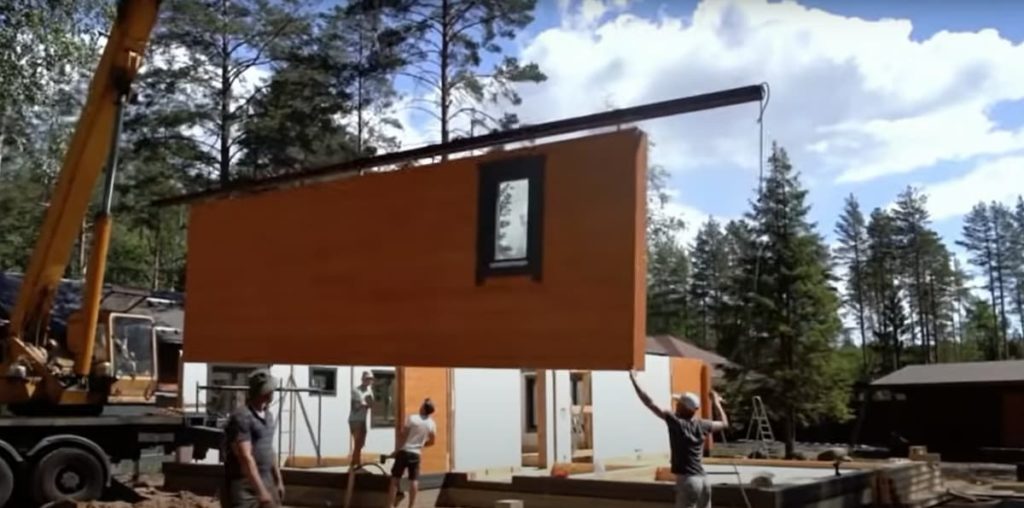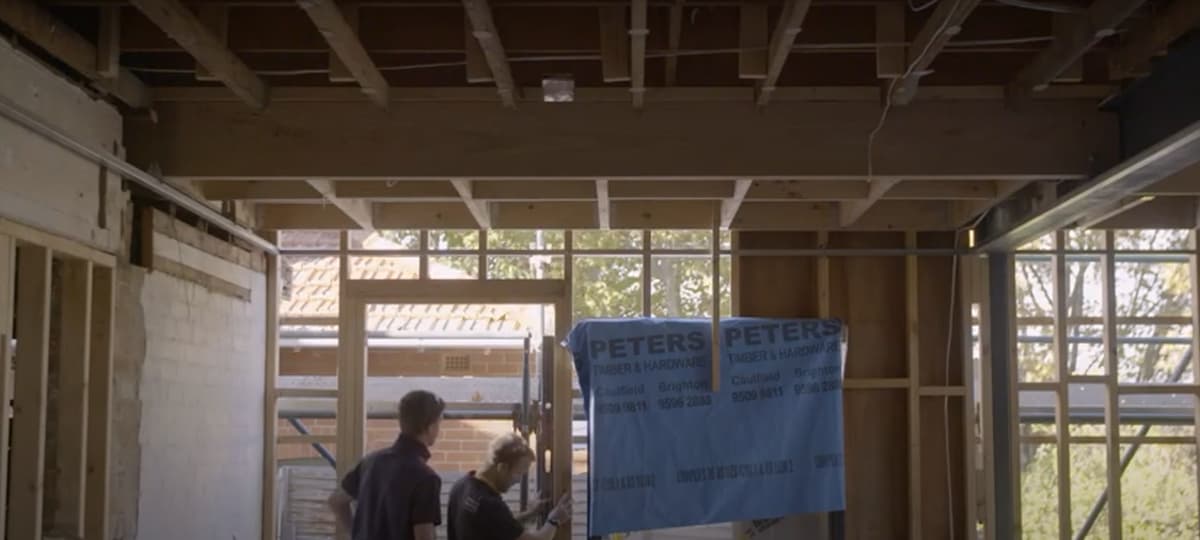
Construction technologies are evolving as builders seek more cost-effective approaches to construction. A modular home may be a money-saving alternative if you’re searching for a new house.
You might be perplexed by some of the lingoes when it comes to prefabricated homes and wants to know how much a modular home costs. So, how much does a modular home cost?
Here are some answers to help you determine if prefab homes prices are right for your budget.
Prefab Home Cost Australia
In general, modular homes range in price from $2500 to $3000 per square meter, however, the cost may differ based on a number of factors. The modular buildings purchase price for a complete kit house may begin at around:
- 85 square metre home that has 1 bathroom, 2 bedrooms may cost $114,000
- 152 square metre home that has 1 bathroom, 2 bedrooms may cost $148,000
- 205 square metre home that has 2 bathrooms, 3 bedrooms may cost $219,000
The building costs of a modular home varies greatly depending on the size and features. In general, a basic module may come with a lower price tag. You may improve your cladding, interior materials, insulation, and other elements as desired.
The cost of a modular house is influenced by such things as the distance from the factory, local building codes and requirements, and other elements. If your construction costs site is beyond a certain distance from the factory, you may have to pay for transportation and cradle.
What is a Modular Home?
Modular kit homes are prefabricated houses that come from a factory as parts or modules. These self-contained modules are then transported to the building site where they’re assembled into a complete house. The assembly process doesn’t require any construction experience and can be handled by novice builders.
The price of a prefab home varies according to its size, the factory it’s produced in, and the extras you include. For example, if you have an architect create unique designs for your modules or if you desire high-end materials, your costs may rise accordingly.
Benefits of Modular Homes Australia
Modular homes offer numerous benefits to those who opt for them rather than standard construction methods:
- Cost savings
Modular homes cost less because they’re built in a factory, not at the construction site. It’s estimated that up to 40% of the cost of a standard home can be saved by opting for prefab homes prices.
- Streamlined construction process
Because your modules are created at a factory, they don’t have to weather climate conditions or sit onsite during the building process. This speeds up production and reduces stress for workers who may be forced to perform uncomfortable tasks during inclement weather.
- Eco-Friendly Construction
Modular homes use less energy because they’re manufactured in controlled factory settings where heat and other greenhouse gases aren’t an issue. Furthermore, modular home materials often weigh less than those used for traditional constructions and this means reduced fuel consumption as well as lower transportation costs.
- Less invasive
Modular homes don’t require the same level of site preparation and this makes them a great option for those who want to build on difficult terrain. If you’re fortunate enough to own an acreage estate, your prefab home can be erected without having to worry about trees or other natural features that might get in the way.
- Sustainable living
A new modular home can use up to 60% less energy than traditional construction methods because it’s weather-tight and lighter due to its materials and assembly process. This means lower carbon emissions and reduced costs for heating and cooling your home over the years.
- High-quality results
When you opt for high-quality modular homes, you’ll benefit from superior insulation compared to standard homes and this can reduce your carbon footprint. Furthermore, prefab homes offer a high level of soundproofing and weather resistance which makes them ideal for those who live in places with extreme climates or harsh elements.
- Larger rooms
A typical single-storey factory-built home comes with an open floor plan but if you desire more privacy, opt for a multiple story design. In this case, you’ll find that most two-story modules have larger rooms compared to standard construction methods. This means increased floor space as well as luxurious interior designs.
- Affordable customizations
Modular homes are perfect for those who want to make their house feel like a home because they’re affordable even when you add customized features such as kitchen islands, unique paint schemes, or perhaps a new floor plan. This is possible because all of the materials for your prefab home come pre-built and don’t require site-specific construction.

Choosing Manufacturers for Residential Projects
If you’re considering building a modular home, it’s important to learn about different factory options before heading down this path. You could always start your search by checking out modular homes Australia reviews, visiting different websites that list reliable manufacturers, and reading testimonials from previous customers who’ve had experience working with these companies.
Once you create a shortlist of factories that meet all of your requirements, compare their products line-by-line so you can narrow down the finalists even further. Finally, visit each prototypical model in person so you can see the quality of workmanship for yourself. Once you find a manufacturer that meets your standards, take into consideration how much prefab homes in Australia cost before making any decisions because many companies offer packages at various price points.
Choosing Modular Home Builders
Before you sign on the dotted line to have your prefab home delivered to your address, there are other important factors to consider first. Customization options include what kind of design you want, the number of bedrooms and bathrooms, size requirements, special features such as built-in furniture or entertainment areas, appliances needed in certain rooms, additional storage facilities, lighting schemes, flooring options, paint schemes, exterior cladding materials or colours, insulation types required based on climate conditions, room layouts required for your lifestyle, and so forth.
In other words, you need to decide how much input you want in the process of having a custom modular home created for you. Some people prefer to have complete control while others find it easier to go with a standardized design instead. Once all of the details are worked out, the manufacturer that you’ve chosen may create a customized 3D plan that includes visualizations of your prefab house right on site.
This way you can get a better idea of what it’ll look like ahead of construction and make any final changes before installation begins. Most factory builders offer 100% customization options for their clients but some companies limit their clients’ flexibility by offering two or three pre-designed floor plans which they update every six months. Although they may seem like the more affordable choice, this isn’t always the right fit for everyone.
Making a Carbon Positive House
Some of these companies provide 3D plans that are text-based instead of pictorial representations which makes it harder to visualize what your home may look like on-site. This is why you could find a factory builder that offers accurate visualizations so you can make better-informed decisions regarding design choices early on in the process.
New floor plan additions are another reason why having access to accurate 3D visualization tools is important because the company might come up with new layouts over time and if you don’t have easy access to them, you could miss out on some opportunities for customization.
Even though modular homes are built quickly, it takes several months for your prefab home to be created, transported to the site, and installed properly. The building process is much more time-consuming than traditional onsite construction because there are many delays that you don’t run into when having a house built. Some of these setbacks include shipping issues, inclement weather conditions which can halt production if materials are unable to be delivered on time, job shortages at the factory which cause delays in production, or even natural disasters such as floods or fires.
Building Prefab Houses
Once all of the materials arrive at your property location, make sure they’re stored in an area where they’ll be safe from theft or damage caused by other environmental threats. It’s important to have proper security measures in place so no one enters restricted areas. The last thing you want is for someone to steal your home materials.
Construction crews arrive on-site and begin working as soon as they have all of the materials in place. If you’re living in a rented apartment or temporary housing, try to find out how much disturbance you’ll be facing throughout construction because it can take several months for completion if work starts without being given any notice beforehand.
On the other hand, some factories are able to start production once they have contacted you about availability because their facilities are equipped with small-scale assembly lines which operate at night so there’s less impact on surrounding communities.
Choosing a Modular Construction
It’s important for homeowners to stay involved throughout the entire building process by checking on their factory regularly and asking questions about what kind of progress has been made. This can be a challenge for those who live too far away from the factory but the more you’re involved, the better your home may turn out in the end because it’ll be tailored to fit all of your needs and desires instead of meeting a standardized set of requirements.
Once construction is finished, deliveries begin so this is another reason why staying involved throughout the entire process is useful because you can make any necessary changes to the blueprint before pieces are transported to your property. It’s important to note that some companies may have their own delivery teams while others may subcontract this task out to external companies depending on what approach works best for their business model. If you’re not sure about a prospective company’s policies, ask them questions before moving forward to avoid any confusion or misunderstandings.
After all of the pieces have been installed, you’re going to want a final inspection done by a home inspector who lives in your local area because they know what to look for in these types of homes and can help you identify any problems before it becomes a major issue that may need professional solutions. Factory builders usually cover costs associated with inspections if their company is chosen as the winner so make sure you use this opportunity wisely because it’ll be to your advantage when making the best possible decision about who to work with.





